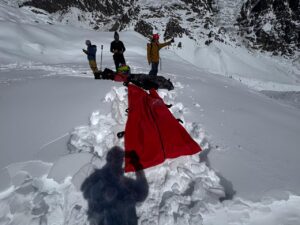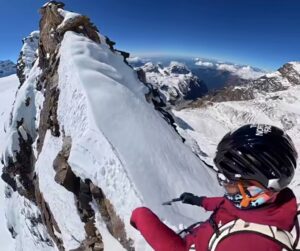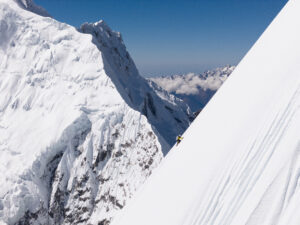Tibet’s impressive Mount Kailash is a sacred place and a center of pilgrimage for both Hindus and Buddhists. However, restrictions imposed by China make approaching the peak increasingly complex.
This week, local companies in Nepalgunj started operating mountain flights to Kailash, aiming to cater to both devotees and tourists. Yet the companies are not allowed to enter Tibet’s airspace, limiting the scope of the experience. That could be disappointing for customers but is a relief for those who advocate keeping the mountain silent, isolated, and spiritual.
Aimed at the Indian market
The flights depart and return to Nepalgunj and are clearly aimed at the thriving Indian market. Organizers may hope to increase economic activity in a town located in the Terai plains, far from the scenic mountains but close to the Indian state of Uttar Pradesh and its bustling capital Lucknow, the 11th most populated city in India.
The planes reach 27,000ft (8,230m) but are not allowed to enter Chinese airspace, therefore views of the mountain and the revered Manasarovar Lake are limited. Kailash’s most impressive feature is its north face, which looks directly into Tibet.

The impressive North face of Mt. Kailash. Photo: Shutterstock
The forbidden mountain
Mount Kailash (6,638m and called Kangrinboqe/Gang Rimpoche in Tibetan) is sacred for practitioners of four religions: Buddhists, Jain, Bon, and Hindus. Hindus believe the mountain is home to Lord Shiva, the third deity of the Hindu trinity.
Traditionally, thousands of Buddhists and Hindu pilgrims head to the mountain every year (the pilgrimage is called Yatra) and walk around it, a process which is called Kora for Buddhists and Parikrama for Hindus. The Kora starts at Darchen village at 4,670m, is always done clockwise, and may take from one to three days. Unsurprisingly, climbing the mountain is strictly forbidden. As far as we know, no one has ever reached the summit.
China closed the peak during the COVID-19 pandemic and only re-opened last year.
“In 2023, Nepali tour operators said they had received over 50,000 bookings from Indian pilgrims for the Kailash-Manasarovar pilgrimage. However, Tibetan authorities abruptly stopped Indian visitors from going there,” The Kathmandu Post reported. Nepali airlines have been trying in vain for years to obtain permission from China to fly over Tibetan territory, the outlet explains.

Buddist pilgrims line the mountain’s flanks during the ritual Kora. Photo: Shutterstock
A partial solution
While not a total solution, this new initiative is attracting customers. The first plane took off on Monday with around 40 Indian tourists and had a satisfactory flying experience, according to local authorities. The company will charter further flights on demand, with a second one already planned for the first week of February.
While local entrepreneurs see the flights as positive news, some opinions on blogs and social media have warned against the danger of commercialization. They fear that the sound of wind and prayers around Kailash could now be accompanied by the roar of engines. However, with Tibetan airspace closed and the peak nearly 100km into Tibet, this won’t be a problem.

Location of Mount Kailash (Kangringboqe) in Tibet. Photo: Google Maps
Mountain flights, performed in small planes or helicopters, are a common tourist offering in Nepal. They allow non-trekking tourists a chance to enjoy a privileged view of the Himalayan giants. The most popular are, unsurprisingly, those departing from Kathmandu toward Everest and the flights to the Macchapuchare-Annapurna area (which feature a glimpse of Dhaulagiri and Manaslu) from Pokhara.
As with Kailash, Everest flights must stay in Nepal’s airspace and therefore only show the south side of the mountain.






